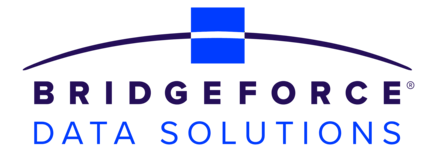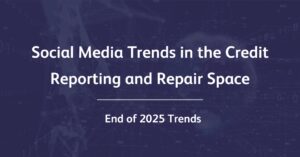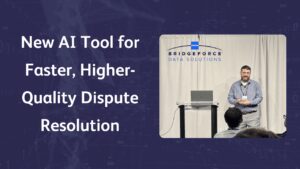Introduction
The Consumer Data Industry Association (CDIA) plays a vital role in supporting the accuracy and integrity of the consumer credit reporting system. One of CDIA’s most widely used tools is the Credit Reporting Resource Guide® (CRRG®), which provides comprehensive, standardized guidelines for reporting consumer credit information in the Metro 2® Format.
The Metro 2® Format is a data specification developed by the Metro 2® Format Task Force and maintained by CDIA. It standardizes how furnishers report consumer credit data to the nationwide consumer reporting agencies (CRAs). This consistent format helps ensure that information is reported accurately, completely, and meets all requirements of the Fair Credit Billing Act (FCBA), the Fair Credit Reporting Act (FCRA), the Equal Credit Opportunity Act (ECOA), and all applicable state laws.
While the CRRG® supports compliance with these laws, it is not a legal document. Rather, it serves as a key industry resource that provides reporting guidance, record layouts, field definitions, frequently asked questions, and specific industry scenarios. It is updated annually to reflect regulatory developments and evolving reporting practices.
The CDIA continuously updates the CRRG® to keep pace with changes in the industry and regulatory environment. This ongoing maintenance makes the guide a valuable, up-to-date resource for anyone responsible for accurate credit reporting. CDIA also offers Metro 2® training, forums, and support to the consumer credit reporting ecosystem.
In this blog, we’ll take a closer look at what the CRRG® includes and how it fits into the broader credit reporting ecosystem.
How to Access the Credit Reporting Resource Guide®
The full Credit Reporting Resource Guide® (CRRG®) is available to authorized users through CDIA’s website. If your organization is already licensed, it can be downloaded as a PDF directly from the CDIA account dashboard by selecting Metro 2 Access. For those who prefer a hard copy, a printed version of the CRRG® can be purchased under Education Services then Publications. To explore these options or to learn more, visit CDIA’s Metro 2® Information page, which outlines how to access and navigate the guide.
There are also plenty of additional resources to take advantage of on the Metro 2® Access site such as, asking a Metro 2® Question directly to the Task Force, proposing a revision to the guide or watching an instructional webinar on Navigating the Credit Reporting Resource Guide® (CRRG®).
What is the CRRG®
As previously mentioned, the CRRG® is a comprehensive set of industry guidelines developed by the Consumer Data Industry Association to promote accuracy, completeness, and fairness in credit reporting.
Federal and state laws regulate certain aspects of credit reporting, but to protect the ability to conduct business, all parties must fully engage in the accuracy process.
The CRRG® documents this process and includes key information on components such as:
- Industry Standards
- Metro 2® Format
- Metro 2® Validation and Implementation Checklist
- Frequently Asked Questions & Answers
- Industry-Specific Reporting Guidelines
- e-OSCAR® Overview
The guide’s central focus is the Metro 2® format, the standardized data reporting format that enables furnishers to report consistently across consumer reporting agencies. The guide covers detailed record layouts, field definitions, and segment descriptions to help data providers format and report information accurately.
The Metro 2® Format Task Force strongly encourages users to make full use of the tools and procedures outlined in the guide and to maintain open communication with consumer reporting agencies to uphold data quality.
With ten detailed sections spanning 369 pages, the CRRG® also includes exhibits and a glossary of terms. It serves as both a technical manual and a practical reference for organizations to support uniformity throughout the industry.
Who Uses the CRRG®?
The CRRG® is a key reference for multiple stakeholders across the credit reporting ecosystem, particularly data furnishers and compliance professionals. Its guidance is essential for organizations that furnish consumer credit data to CRAs and need to follow a standardized framework for data accuracy and consistency.
The CRRG® serves several stakeholders involved in the credit reporting ecosystem. Its central focus on the Metro 2® format makes it especially valuable for organizations that furnish consumer data to consumer reporting agencies.
Key stakeholders include:
- Consumer Reporting Agencies: These companies collect, store, maintain, and distribute consumer credit information. The major agencies are Equifax, TransUnion, Experian, and Innovis.
- Metro 2® Format Task Force: Comprised of representatives from the major consumer reporting agencies and supported by the CDIA, this task force collaborates to develop and maintain the Metro 2® reporting format. Their mission is to provide a standardized method for reporting accurate, complete, and timely data.
- e-OSCAR® System Support Team: This team manages the automated consumer dispute resolution system required under the Fair Credit Reporting Act (FCRA). e-OSCAR® was initially established by the four major credit bureaus. You can read more about e-OSCAR® in our past blog.
- Data Furnishers: Companies that provide consumer credit account information to one or more consumer reporting agencies. Their duties are outlined in section 623 of the FCRA, which is available on the FTC’s website.
- Regulatory Bodies:
- The Consumer Financial Protection Bureau (CFPB) oversees and enforces rules under the FCRA and regulates the consumer reporting ecosystem more broadly.
- The Federal Trade Commission (FTC) shares enforcement responsibilities with the CFPB and plays a key role in oversight and interpretation of the FCRA.
- State Attorney Generals also have the ability to commence investigations and have begun flexing that power with regulatory rollbacks at the federal level.
Key Components of the CRRG®
The CRRG® includes detailed guidance across multiple areas of credit data reporting.
Notable sections include:
- Metro 2® Format and Record Layouts: Descriptions of all data segments and layout standards.
- Field Definitions and Valid Values: Clear instructions for using codes and values correctly.
- Exhibits and FAQs: Reference tools that clarify complex scenarios and reporting logic.
- Validation and Implementation Checklist: A practical guide to help furnishers ensure compliance.
- Industry-Specific Guidance: Rules for specialized sectors like student loans or rental reporting.
- e-OSCAR® Overview: An overview of the automated consumer dispute resolution system supported by the consumer reporting agencies.
How to Use the CRRG®
Each organization’s reporting obligations are unique. The CRRG® is designed as a flexible reference tool—not a prescriptive checklist. It supports furnishers in applying industry standards appropriately, depending on the data they report and the systems they use.
Instead, the CRRG® serves as a comprehensive reference to help businesses understand the industry standards and tools available to enable accurate and consistent reporting. It is designed to support informed decision-making and compliance across diverse reporting environments.
Using the guide in combination with dedicated Metro ® training resources will help industry professionals stay informed, maintain compliance, and contribute to the overall accuracy and fairness of consumer credit reporting.
Why It Matters to Stay Informed
Accurate credit reporting directly affects financial access and consumer trust. By staying current with CRRG® guidance and training opportunities, organizations reduce compliance risk and contribute to a more transparent and equitable credit ecosystem.
Staying informed about the latest industry standards, regulations, and best practices is essential for all stakeholders. The credit reporting landscape continues to evolve with changes in laws, technology, and business practices. Understanding these developments helps organizations remain compliant and maintain trust with consumers and partners.
The CRRG® supports informed decision-making by providing a comprehensive foundation of knowledge about credit reporting processes and standards. Using the guide and related educational resources empowers industry professionals to uphold accuracy, transparency, and fairness throughout the reporting cycle.
By committing to ongoing education and adherence to established guidelines, businesses can reduce risks, improve data quality, and better serve their customers.
How the Data Quality Scanner Helps
We know that it can be hard for organizations to keep up with the CRRG® updates, which is why the Data Quality Scanner is committed to a 90-day service level agreement so that when updates to the CRRG are made, or regulatory agencies or courts issue rules and opinions, businesses can be in a position to succeed without making intensive updates to internal controls.
The Data Quality Scanner is powered by an industry-leading ruleset of 392 risk-ranked rules that are applied across 100% of the accounts reported. It evaluates the accuracy and progression of your Metro 2® files, helping your team identify and address furnishing issues before they become a problem. By automating this process, the Data Quality Scanner supports greater accuracy and consistency in your credit reporting data.
Our research shows that improving furnishing data accuracy can lead to a 30% reduction in disputes and now with our Disputes Module, your organization can analyze all ACDV responses from e-OSCAR® to enable 100% review for Quality Assurance and Quality Control.
Conclusion
The CRRG® is a crucial tool for anyone involved in the credit reporting industry. By focusing on the Metro 2® format and providing detailed guidance on data reporting standards, the CRRG® enables accuracy, transparency, and fairness in how consumer information is managed and shared.
Whether you are a credit grantor, credit reporting agency, or compliance professional, consulting with the guide can provide a strong foundation for understanding and executing credit reporting processes effectively.
To stay current and informed, we encourage you to visit the CDIA website to learn more about the guide and explore additional resources such as Metro 2® Format training programs, workshops and webinars. Leveraging these tools will help your organization maintain high standards and contribute to a trustworthy credit reporting environment.
About Bridgeforce Data Solutions and the Data Quality Scanner
Bridgeforce Data Solutions is a new breed of RegTech SaaS company that offers the Data Quality Scanner, the only end-to-end accuracy solution for credit reporting and disputes. The Data Quality Scanner is an automated, low-cost, low-IT diagnostic solution with two modules: Furnishing and Disputes.
The Furnishing Module assesses data quality before or after furnishing for 100% of furnished data, while the Disputes Module identifies data issues in credit reporting disputes, how consumer reporting agencies transform furnished data, and how well dispute agents resolve data quality issues.
These unique features make the Data Quality Scanner a powerful solution for the 50+ financial institutions of all sizes that actively use it, including top banks, credit unions, fintech lenders, and servicers.
Reach out today to learn more on how we can benefit your organization via our chat.



